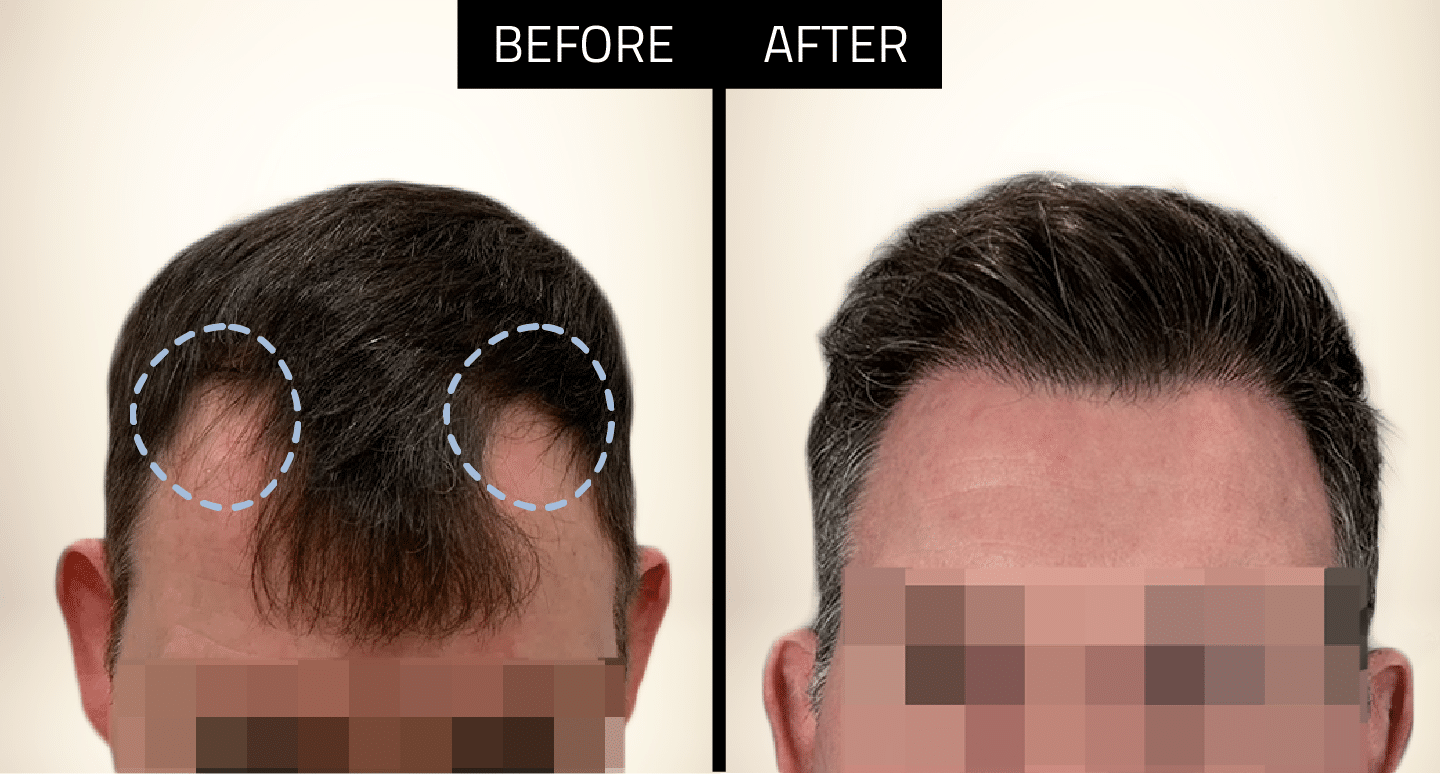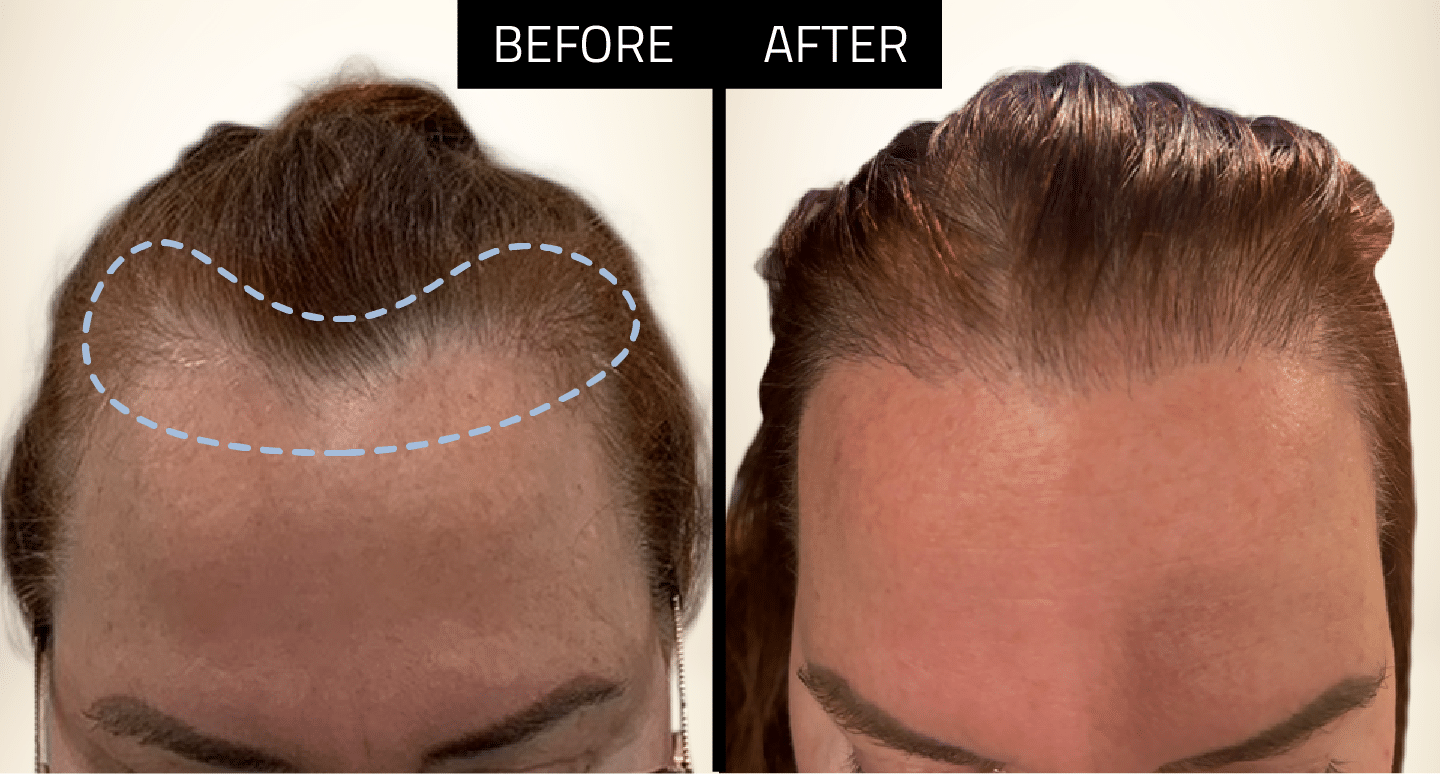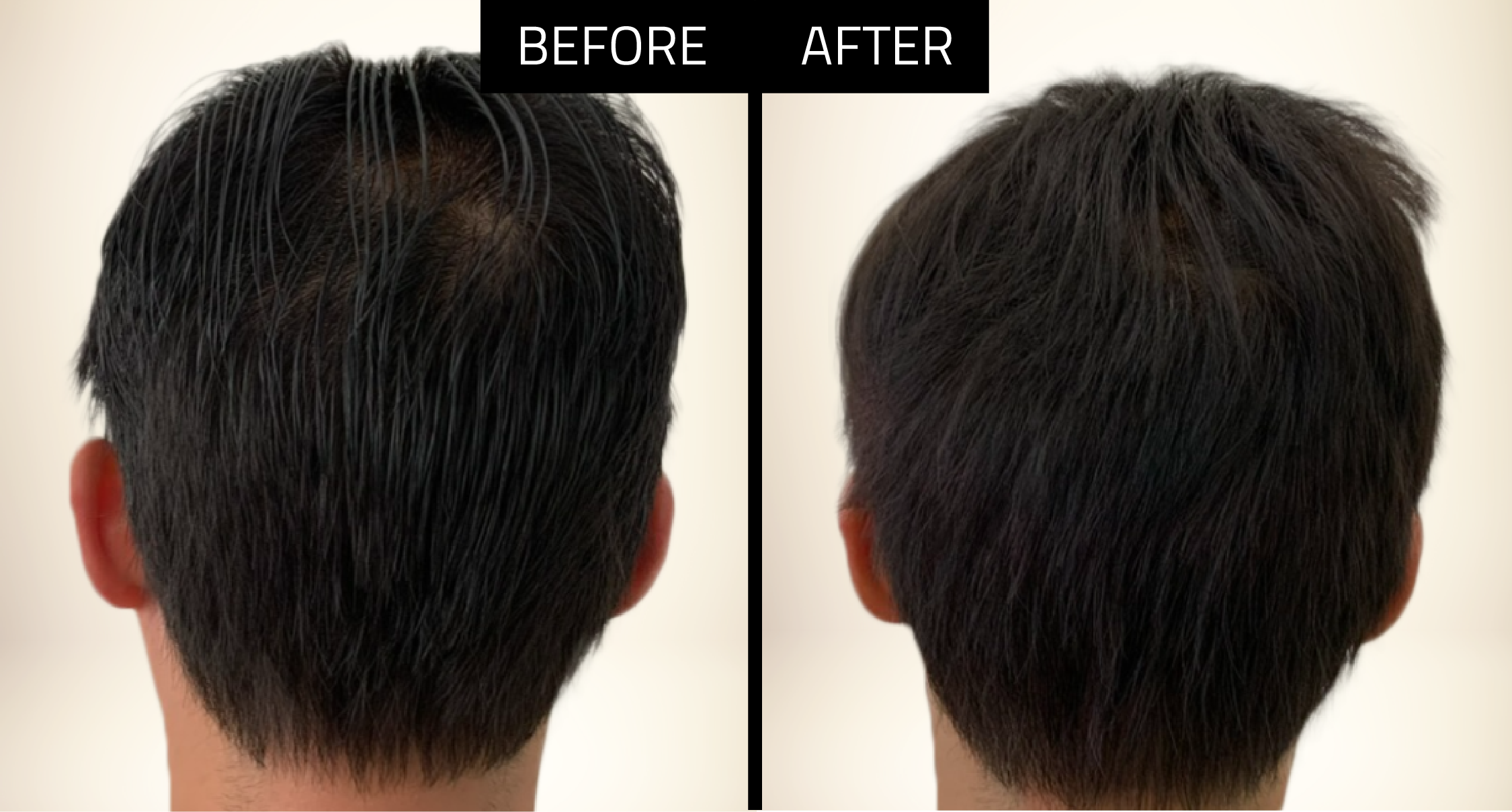People searching for surgical hair loss solutions are often put off by the prospect of having to shave parts of their head or take time off for seclusion and recovery.
What’s more, most people really don’t want anyone to know they’ve had a hair restoration done, and concern over that makes a lot of people wait — sometimes for way too long.
Thankfully, there’s a hair transplant procedure that avoids all of these roadblocks, one that’s highly effective and produces incredibly natural looking results.
It’s known as a long hair transplant or Shave-Less FUE, and this no-shave procedure is transforming what it means to have a surgical hair restoration.
The industry actually calls these transplants Preview Long Hair FUE.
The reason they say “preview” is that because you’re taking the full length of the hair, you can more or less see what the final results of your transplant will look like when you walk out.
With other transplants, you won’t even get a sense of how the hair will grow in until around six months; there’s no sense of the final product, just waiting and hope.
It’s a really nice difference.

What Is a Long Hair Transplant?
A long hair transplant is a FUE (follicular unit excision) hair transplant surgery where the surgeon doesn’t cut the hairs before or during transplantation.
The individual hairs for transplant are left long and punched out using a very precise tool that extracts the at just the right depth to capture the follicle and preserve graft viability.
At facilities with advanced capabilities like North Atlanta Hair Restoration, a dedicated long hair transplant machine is used, and it has special features to facilitate both precise extraction and placement.
How Does a Long Hair Transplant Differ From a Regular Hair Transplant?
The basic process is very similar to a traditional FUE hair transplant, except that during shaved procedures, hairs at the donor site – both those being transplanted and the ones that will remain – have to be cut before or during the procedure.
Often, the site where the transplants will be placed is shaved during regular FUE, too.
That means that both the donor site and the site of transplantation will show evidence that a hair transplant has been performed, at least until the hairs start to grow back.
Conversely, a long hair transplant avoids the telltale look of a recent hair transplant by leaving both the grafts and existing hair at the donor and recipient sites at their original length.
And like any FUE procedure, long hair FUE produces minimal scarring, with minimal discomfort and almost no downtime for recovery.

What Are the Benefits of a Long Hair Transplant?
The benefits of a long hair transplant include:
- Superior concealment. Normal-length hair at both the donor site and the site where the grafts are placed means healing grafts and excisions aren’t as visible.
- No downtime or hiding. Most people can return to work and social activities the very next day, with no need for concealment strategies like hats, head wraps or weird hairstyles.
- Immediate results. You don’t have to wait for the transplanted hair to grow in because it’s already at the desired length.
- More natural-looking results. Extracting the hair while it’s long lets the surgeon see its natural arc, curl and angle, allowing for better placement and blending into existing hair.
These features together help make a long hair transplant even more of a “stealth” procedure.
People really can’t tell you’ve had anything done, in either the short or long term.
That means more discretion and privacy and less embarrassment for clients. It’s also why more and more patients are seeking out this procedure.
How a Long Hair Transplant Can Produce Better Final Results
A really important difference between long hair FUE and shaved FUE is in the final results – long hair FUE just turns out a whole lot better in terms of a natural look.
Why is that?
First, there’s the accuracy – the surgeon can achieve absolute precision during graft placement by seeing the hair follicles as they appear with their full length, thickness and texture.
Second, there’s better placement of the arc of the hair – similar to a periscope on a submarine, it’s the natural curve of the individual hairs as they emerge from the follicle.
The surgeon can see those arcs during placement and make sure they’re all going in the right direction.
You want the arcs to all be in line and also be in the direction that the native hair is, relative to the arc and also the angulation.
As you’re creating a hairline, especially, or a crown with long hair FUE, you can dial in that arc perfectly for incredibly natural results.
If you rotate it even a little bit – which often happens with Shaved FUE, since you can’t see the arc as well – there’s a huge variation in the arc and you can see it.
That issue with the arcs being wrong is why a lot of inferior hair transplants are really obvious – you can see that the hair is going in unnatural directions, and it just does not look right.
Long hair FUE helps eliminate that very clear sign of a hair transplant.

If Long Hair FUE Is That Much Better, Why Isn’t it More Common?
Fewer clinics offer long hair FUE because it is extremely difficult to perform and it requires a physician with skill of the highest order.
You also need a very skilled team to assist the surgeon, because pulling long hair grafts after they’ve been cored is quite difficult and time consuming – you have to find the right ones for placement, and they get tangled very easily.
Especially with hair lengths of more than 2 inches – common for women and a lot of men – long hair FUE can be very challenging because of the technical skill required.
Most hair restoration clinics just do not have the highly experienced surgical personnel to offer this superior hair restoration technique, which is a shame because of how much better it can be.
Who is a Good Candidate for Long Hair Transplantation?
Because of their convenience, discretion, easy recovery, and great-looking results, these procedures are very popular with both men and women and an excellent choice for working people and busy professionals.
Good candidates for long hair FUE transplants include pretty much anyone who would be eligible for a traditional FUE procedure.
You mainly need to be in good enough health for this simple outpatient surgery, have enough healthy hair at a good donor site for transplantation, and not have certain types of autoimmune disorders that prevent transplanted hair from growing.
Of course, only a consultation with a hair loss expert can tell you for sure, but most people find that they are suitable candidates for long hair transplant.
Long hair FUE transplantation does take longer than a regular FUE hair restoration, so those with advanced hair loss may require multiple surgeries to achieve the desired results.
But for the right candidates, this procedure can be a game-changer for patients seeking a seamless transition.
Wondering If a Long Hair Transplant Might Be Right for You?
Schedule a consultation at North Atlanta Hair Restoration to find out more. You can also call us at (678) 845-7521 to ask questions or make an in-person or virtual appointment.
Our surgeon Dr. Danyo is a leading practitioner of long hair FUE, and he and his veteran surgical team can help you achieve the transformative results you desire.
FAQ About Long Hair Transplants
Will a long hair FUE transplant provide lasting results?
A long hair FUE transplant will provide lasting results that look great for years to come.
These procedures are typically just as successful as shaved FUE transplants in terms of follicle viability and healthy growth — sometimes even more so.
In most cases, your transplanted hair will grow well and stay there permanently, although you may need subsequent procedures down the line if your hair loss in other areas continues.
Just be sure to choose a qualified surgeon to perform your surgery and make sure you pick one with lots of experience in Shave-Less FUE techniques.
Does a long hair transplant require special after care?
A long hair transplant doesn’t require much special after care at all, although you will need to closely follow your surgeon’s instructions.
In fact, Dr. Danyo and his team usually tell patients to wash their hair the night of the procedure and regularly thereafter, using a baby shampoo and gentle strokes to avoid disturbing the grafts.
You do have to take some care to avoid pulling out the grafts post-surgery, but Dr. Danyo says he almost never sees patients who have managed to dislodge their grafts.
Who can perform a long hair transplant procedure?
According to the ISHRS, only a properly trained and licensed physician should perform a hair restoration surgery, and that includes long hair transplant procedures.
Although many clinics now offer hair restoration surgeries performed solely by surgical techs or physicians’ assistants in jurisdictions where they are allowed, these procedures are not recommended.
What’s more, not all hair restoration surgeons know how to properly perform a long hair transplant, so make sure to seek out one who has experience with this cutting edge technique.


